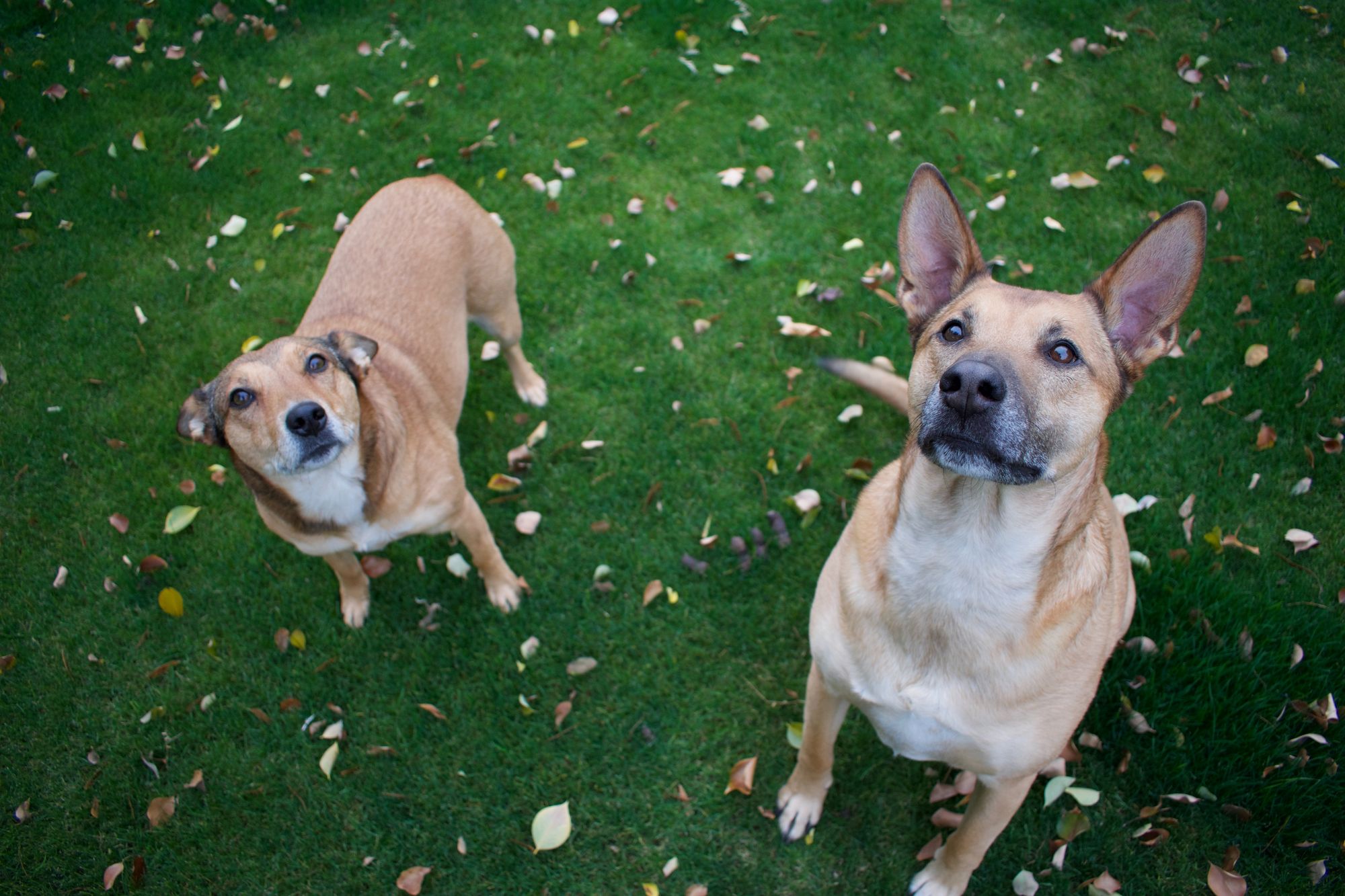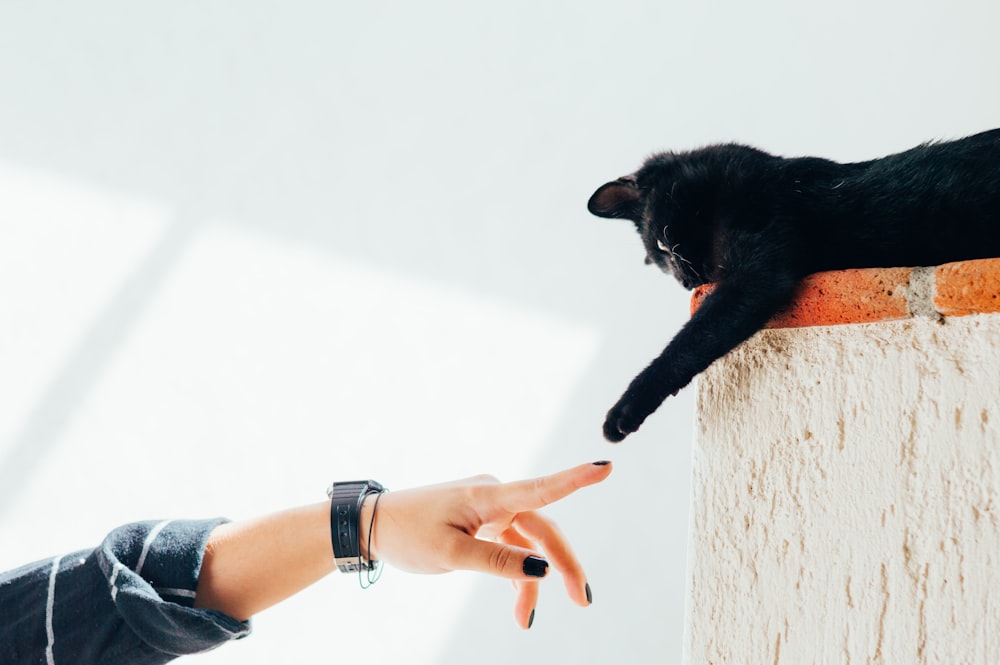Some dogs get along great with other dogs, some take time to get comfortable, and some simply can’t cohabitate safely. When thinking about bringing a new dog into your home, it’s very important to think about your current dog. A well managed introduction can make or break the relationship. This article will explain:
- How to introduce your dogs
- Mistakes to avoid when introducing dogs to one another
- Frequently asked questions about introducing a new dog to your current dog
Steps for introducing a new dog to your current dog
Introducing your new dog to your current dog is all about patience, space management and being aware of how all animals are feeling. Follow these steps when introducing your dogs:
- Start slowly. Introduce them through a closed door. This will allow them to get to know each other through the door, but not come into contact.
- Give each dog a blanket that smells like the other animal. This will help them get used to each other’s smell and presence.
- Reward throughout every encounter. Give each dog plenty of treats and rewards throughout each interaction. This will help the dogs develop good associations about each other.
- Allow your dogs to say hello on either side of a baby gate. Once your dogs are comfortable saying hi on either side of a closed door, introduce them through a baby gate. This way they’ll be able to see each other, but not come into contact.
- Go on a tandem walk. Once your dogs seem relaxed saying hello on either side of a baby gate, consider a tandem walk. Have a friend walk one dog, you walk the other dog, stay six feet apart, and feed both dogs treats throughout the walk. You can reduce the distance between your dogs as they get more comfortable.
- Be cautious with off leash interactions. Do not allow the dogs to roam freely in the same space until both animals are comfortable, and you are confident that everyone can stay safe and happy.
- If either animal shows signs of stress, separate them immediately. You will also want to take a step back and slow down the process.
- Move at the pace of the more tentative animal. When considering how to proceed with the introduction process, make decisions based on how your more tentative dog is feeling.
- Offer both animals a safe space. Even after your dogs are living comfortably together, continue to offer each animal a safe space to retreat to whenever they need a break.
How can I tell if either dog is stressed during the introduction
Areas to pay attention to when evaluating stress levels:
- Tail. A loose tail or propeller-like wag usually indicates your dog is feeling friendly. On the other hand, a stiff or high tail may indicate that your dog is onguard.
- Ears. Ears held in a natural position typically indicate that your dog is relaxed. On the other hand, ears that are held up and forward may indicate a willingness to fight or general aggression towards the other dog.
- Eyes. “Soft Eyes,” a warm, sometimes squinty look, usually means your dog is friendly and willing to interact. On the other hand, “Hard Eyes,” a cold, icy look usually associated with a direct stare, usually indicates that your dog may be prepared to fight or aggress forward.
- Mouth. A mouth that is slightly open, with no teeth exposed, generally means your dog is relaxed. Whereas a frightened dog may pull the corners of his lip back (“lip long”) and a dog that needs space may pull their lips back, bare their teeth and wrinkle their muzzle. This action is designed to intimidate the other dog from moving closer.

Mistakes to avoid when introducing dogs to one another
- Rushing the process. Do not proceed with an off leash interaction until you’re confident both animals will be calm and comfortable. Rushing can lead to over-arousal, fear and even a situation where your dogs will never be comfortable in the same space. Patience is your friend.
- Feeding your dogs in the same space. To ensure your dogs don’t have to compete for food, and reduce the likelihood of conflict during meal time, give them their food in separate spaces.
- Long introductions. Once your dogs are ready to meet, introductions should be short, sweet and frequent. Keepings things short increases the likelihood that both animals remain calm, comfortable, and have good feelings about one another. Once your dogs are comfortable, you can start to increase the length of each interaction.
- Leaving them unsupervised. When introducing your dogs, never walk away and leave them alone. Being continually present will allow you to monitor each animal’s body language and take action if either animal shows signs of stress or discomfort.
Frequently asked questions about introducing a new dog to your current dog
How long does it take for a dog to adjust to a new dog?
Every dog’s timeline is different, but the key is to move at the speed of your more tentative animal and focus on how they’re feeling. By doing this, you will help your dogs create a good association with each other and increase the likelihood that they have a positive and healthy relationship.
Will my dog ever accept the new dog?
Introducing your dogs is all about patience, space management and being aware of how all animals are feeling. To increase the likelihood that your dog will accept your new dog, and vice versa, move slowly and introduce them in stages. Do not proceed with an off leash interaction until you’re confident both animals will be calm and comfortable.
Where should the new dog sleep?
When you bring a new dog home, offer both animals their own sleeping space. You can accomplish this with crate training or a baby gate. This will help each dog develop a routine for bedtime, and also reduce territorial behavior.
How do you know if dogs don’t like each other?
You should always introduce your dogs in stages. Start by introducing them on either side of a closed door, then through a baby gate, and then on a tandem walk. If either dog growls or barks, you should take a step back in the process and continue to use treats/rewards to help the dogs develop a good association. Furthermore, each dog’s body language will help you determine how they’re feeling. Areas to pay attention to include each dog’s:
- Tail. A loose tail or propeller-like wag usually indicates your dog is feeling friendly. On the other hand, a stiff or high tail may indicate that your dog is on guard.
- Ears. Ears held in a natural position typically indicate that your dog is relaxed. On the other hand, ears that are held up and forward may indicate a willingness to fight or general aggression towards the other dog.
- Eyes. “Soft Eyes,” a warm, sometimes squinty look, usually means your dog is friendly and willing to interact. On the other hand, “Hard Eyes,” a cold, icy look usually associated with a direct stare, usually indicates that your dog may be prepared to fight or aggress forward.
- Mouth. A mouth that is slightly open, with no teeth exposed, generally means your dog is relaxed. Whereas a frightened dog may pull the corners of his lip back (“lip long”) and a dog that needs space may pull their lips back, bare their teeth and wrinkle their muzzle. This action is designed to intimidate the other dog from moving closer.




